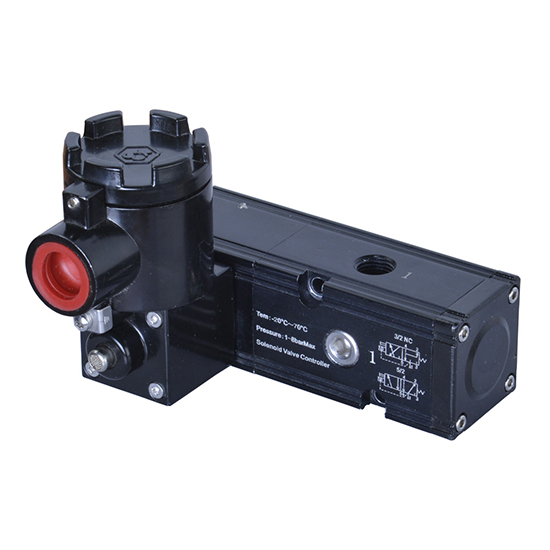Introduction
Solenoid valves are vital for fluid control in various industries. 3/2 solenoid valves offer precise control for basic applications, while 5/2 valves handle complex systems with advanced flow control. These valves enhance the efficiency and reliability of fluid control systems, making them essential for optimal performance.
Click To View LORZEN Solenoid Valve Products>>
What is a 3/2 Solenoid Valve?
A 3/2 solenoid valve is a type of control valve with three ports and two positions. These valves are widely used to control the flow of air, gas, or liquid in pneumatic and hydraulic systems. The 3/2 solenoid valve can be normally closed or normally open, depending on the default state of the valve.
What is a 5/2 Solenoid Valve?
A 5/2 solenoid valve is a valve with five ports and two positions. This type of valve is commonly used in more complex pneumatic systems where control over multiple flow paths is needed. Like the 3/2 valve, the 5/2 solenoid valve can also be normally closed or normally open.
Working Principles of 3/2 Way Solenoid Valve
The working principle of a 3/2 solenoid valve involves an electromagnet that moves a plunger to open or close the valve. When the solenoid is energized, the plunger is pulled, changing the flow path between the ports. In a normally closed 3/2 solenoid valve, the valve opens when energized, allowing fluid to flow from the inlet port to the outlet port. When de-energized, the valve returns to its default state, blocking the flow.
Working Principles of 5/2 Way Solenoid Valve
The 5/2 solenoid valve operates similarly but with more complexity due to its additional ports. When the solenoid is activated, it shifts the spool inside the valve, changing the connection between the five ports. This action directs the fluid flow to different pathways, making it suitable for applications requiring directional control of actuators.
Applications of 3/2 Way Solenoid Valve
3/2 solenoid valves are used in various applications, including:
- Pneumatic systems: for controlling the direction of air flow in cylinders and actuators.
- Hydraulic systems: for controlling the flow of hydraulic fluid.
- Process control: in industries like food and beverage, pharmaceuticals, and water treatment.
Applications of 5/2 Way Solenoid Valve
5/2 solenoid valves find applications in:
- Complex pneumatic systems: for controlling double-acting cylinders.
- Automation: in manufacturing processes requiring precise control of multiple actuators.
- Robotics: for managing the movement of robotic arms and grippers.
What is the Difference Between 3/2 and 5/2 Solenoid Valve?
The primary difference between 3/2 and 5/2 solenoid valve lies in the number of ports and the complexity of the control they offer. A 3/2 solenoid valve has three ports and two positions, making it simpler and suitable for basic flow control tasks. On the other hand, a 5/2 solenoid valve has five ports and two positions, allowing for more complex flow control and directional changes.
| Feature | 3/2 Solenoid Valve | 5/2 Solenoid Valve |
|---|---|---|
| Number of Ports | 3 | 5 |
| Number of Positions | 2 | 2 |
| Control Complexity | Simple | Complex |
| Typical Applications | Basic pneumatic and hydraulic systems | Advanced pneumatic systems, automation |
| Fluid Types | Air, gas, liquid | Primarily air and gas |
| Port Configuration | Inlet, outlet, exhaust | Multiple inlet and outlet configurations |
FAQs
Q: What is a Namur Solenoid Valve?
A: Namur solenoid valves are designed according to the NAMUR standard, which specifies mounting patterns and interface dimensions for easy integration with pneumatic actuators. Both 3/2 and 5/2 solenoid valves can be configured as Namur solenoid valves.
Q: What are the benefits of using a 5/2 solenoid valve over a 3/2 solenoid valve?
A: The 5/2 solenoid valve offers more control options and flexibility, making it suitable for complex systems requiring multiple directional changes, such as in automation and robotics.
Q: Can a 3/2 solenoid valve be used in place of a 5/2 solenoid valve?
A: In some simple applications, a 3/2 solenoid valve might suffice, but it lacks the capability to control more complex flow paths that a 5/2 solenoid valve can manage.
Conclusion
Understanding the difference between 3/2 and 5/2 solenoid valve is crucial for selecting the right component for your system. The 3/2 solenoid valve offers straightforward control for basic applications, while the 5/2 solenoid valve provides enhanced functionality for complex systems. Both types are essential in various industries, ensuring efficient and precise fluid control.
By knowing their working principles, applications, and differences, you can make an informed decision and enhance the performance and reliability of your pneumatic or hydraulic systems.
With over 25 years of experience and a portfolio of more than 1,000 satisfied clients, LORZEN delivers solenoid valves that meet the highest industry standards. Our 3/2 and 5/2 solenoid valves are engineered for precision and durability, ensuring optimal performance in every application. Trust LORZEN for your solenoid valve needs and experience the difference that expertise and innovation bring to your operations.



